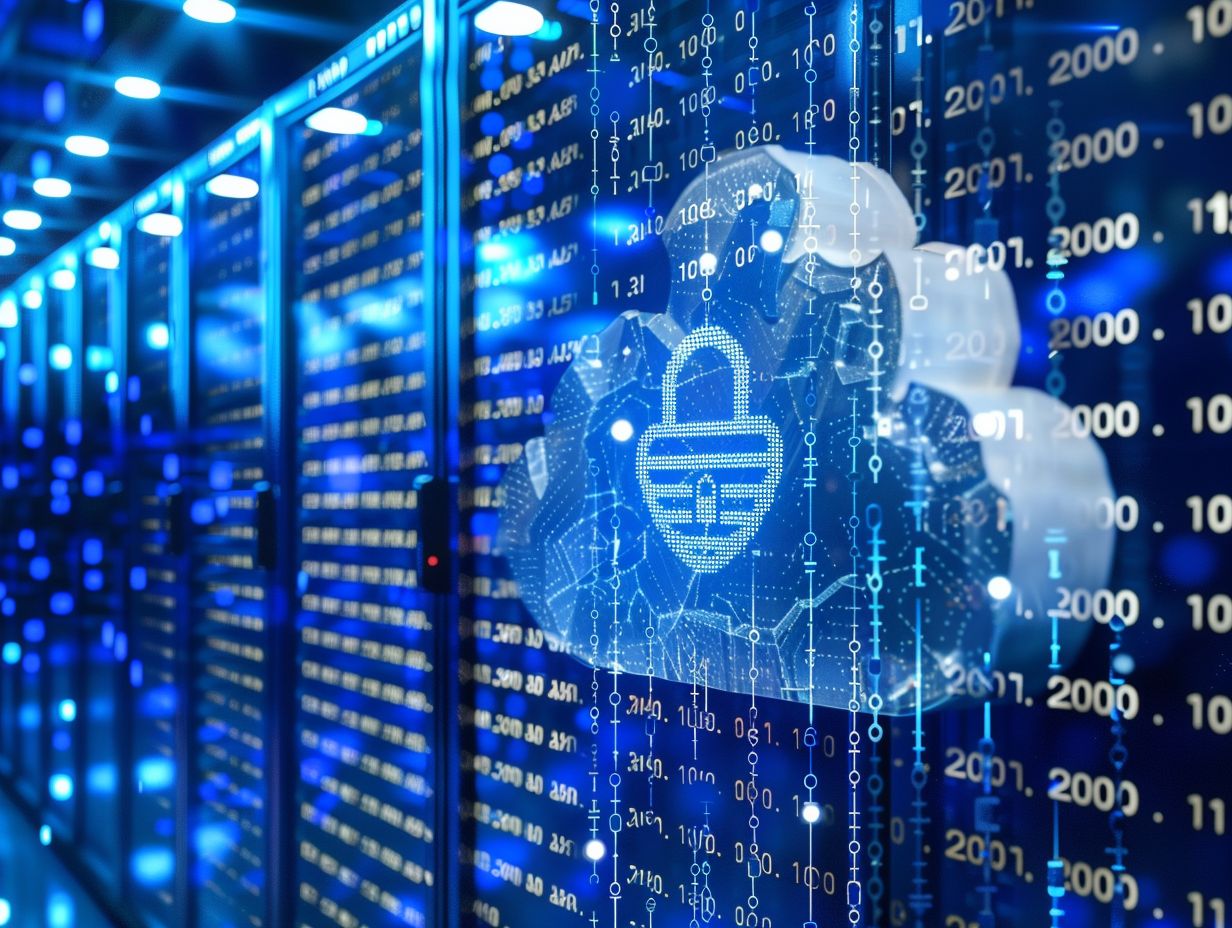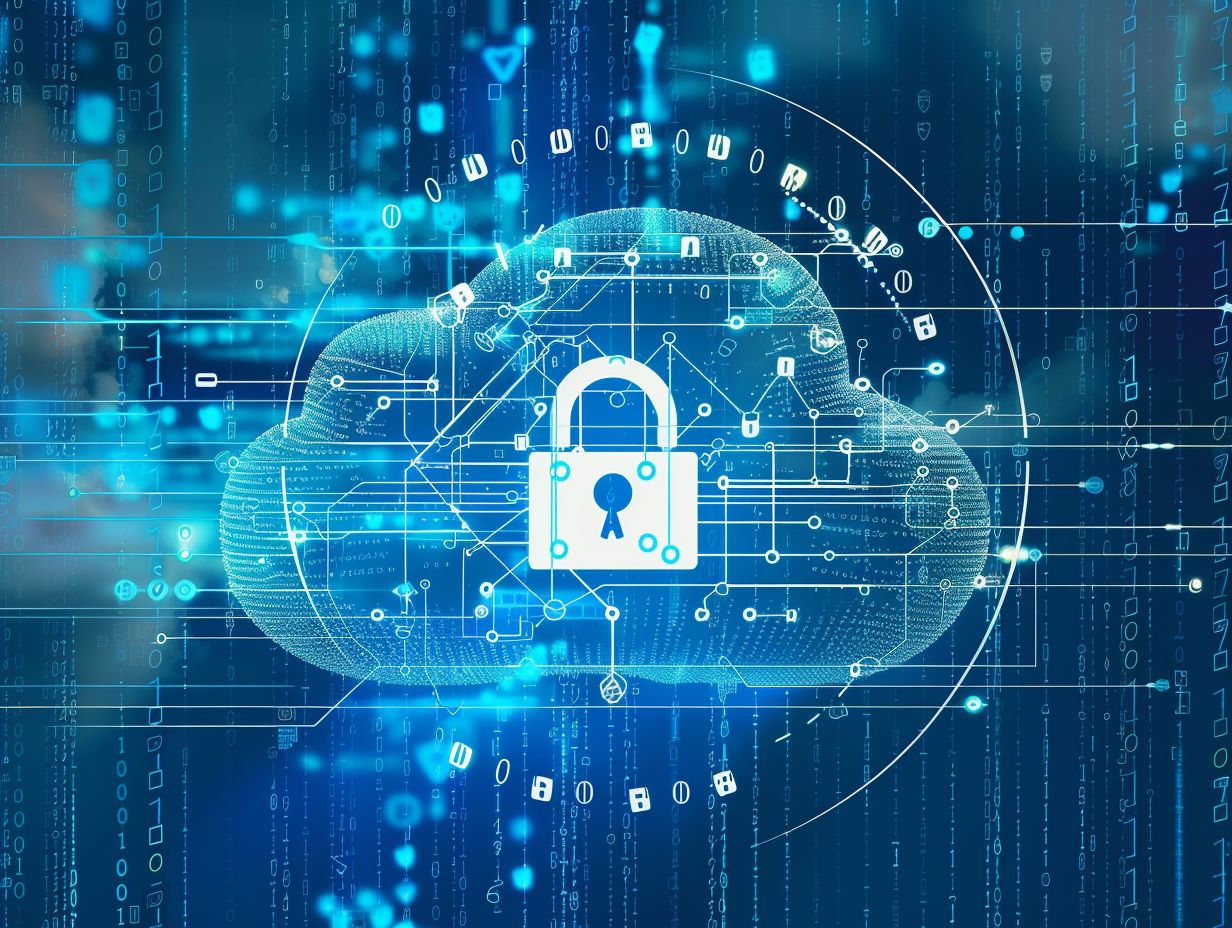Cloud security is a critical component of your organization’s IT infrastructure, particularly if you are working towards a CCNA certification.
You will examine the advantages of cloud security for CCNA professionals, such as improved data protection and cost efficiencies.
Furthermore, we will address prevalent cloud security threats, recommended methods for securing cloud environments, and the tools and technologies that can help minimize risks.
Acquire important knowledge about the connection between cloud security and CCNA cloud computing concepts, and discover study strategies to help you prepare for the exam.
Key Takeaways:

What is Cloud Security?
Cloud security refers to the practices, technologies, and policies implemented to protect cloud computing environments and data stored within them. Data protection is a fundamental aspect of cloud security, ensuring that sensitive information is safeguarded from unauthorized access or loss. Encryption plays a crucial role in securing data by converting it into a code that can only be read with the appropriate decryption key. Access control mechanisms are used to manage and restrict who can access specific resources within the cloud environment, reducing the risk of data breaches. Network security protocols are put in place to safeguard the communication channels between different components in the cloud infrastructure, preventing cyber attacks and data interception.
Benefits of Cloud Security for CCNA
Understanding cloud security is essential for CCNA professionals like yourself as it provides a comprehensive approach to securing network environments and data.
Enhanced Data Protection
Ensuring that sensitive information remains secure and confidential through encryption techniques and access controls is imperative for enhanced data protection in cloud computing environments, where data is stored and processed over the internet.
Employing encryption methods like AES (Advanced Encryption Standard) and RSA (Rivest-Shamir-Adleman) enables organizations to protect their data from unauthorized access or cyber attacks.
Data privacy measures, such as data masking and tokenization, play a crucial role in obfuscating sensitive information, thereby reducing the risk of breaches.
Regular integrity checks are essential to verify that data remains unchanged and authentic, thereby upholding the overall trustworthiness of the cloud environment.
Cost Savings
Implementing effective cloud security measures in your organization can result in cost savings due to decreased reliance on extensive hardware investments and improved scalability. By adopting strong security features like encryption protocols and access controls, you can guarantee that your network devices are protected against cyber threats, leading to enhanced operational efficiency.
Additionally, implementing advanced mitigation techniques such as intrusion detection systems and regular security audits can strengthen the overall security posture of your cloud environment. These proactive measures not only contribute to cost-effectiveness but also enable seamless scalability, give the power toing your business to adapt and expand while maintaining robust data protection.
Common Threats to Cloud Security
Cloud security encounters numerous threats and vulnerabilities that have the potential to compromise the integrity and confidentiality of data stored in cloud environments.
Types of Cyber Attacks

Cyber attacks on cloud systems can consist of malware infections, DDoS attacks, phishing attempts, and data breaches that disrupt network traffic and compromise data integrity. These attacks exploit vulnerabilities in cloud infrastructure through various attack vectors, such as SQL injection, cross-site scripting, and man-in-the-middle attacks.
Malware infections can spread rapidly across cloud networks, causing significant downtime and financial losses. DDoS attacks flood cloud servers with traffic, leading to service interruptions. Phishing attempts target sensitive information and credentials, posing a risk to data confidentiality. Data breaches in cloud systems can result in the exposure of proprietary data and customer information.
To mitigate these risks, organizations must implement robust security measures like encryption protocols, access controls, regular audits, and employee training programs.
Internal and External Threats
Cloud security must address both internal threats, such as insider attacks and unauthorized access, and external threats like hackers and malicious actors targeting network professionals and sensitive data.
Internal threats to cloud security, often overlooked, pose a significant risk as they involve individuals within the organization who may have access to confidential data. These insider attacks can result in data breaches, leaks, or unauthorized modifications to sensitive information.
On the other hand, external threats from outside the organization, such as hackers and cybercriminals, can exploit vulnerabilities in the cloud infrastructure, compromising user access controls and putting network professionals under immense pressure to enhance security measures.
Understanding the distinction between these threats is crucial for implementing effective security protocols within a cloud environment.
Best Practices for Cloud Security
When implementing best practices for cloud security, it is important to incorporate strong authentication mechanisms, enforce access control policies, and regularly perform data backups. These measures help safeguard against vulnerabilities and unauthorized access to ensure the security of your cloud environment.
Implementing Strong Authentication
Implementing strong authentication methods, such as multi-factor authentication and biometric identification, is essential for enhancing network security and preventing unauthorized access to cloud resources.
You must prioritize robust authentication measures in cloud security to combat the rising incidents of cyber threats and data breaches. Multi-factor authentication, which requires users to provide multiple verification factors, establishes an additional layer of defense against unauthorized access. Biometric identification, utilizing unique physical traits for verification, offers unparalleled security. Network access controls, including firewalls and VLAN segmentation, further strengthen the system’s security. The incorporation of security protocols like SSL/TLS encryption ensures data confidentiality during transmission. By integrating these methods, organizations can protect sensitive information and maintain data integrity in the cloud.
Regular Data Backups
Regular data backups are essential for ensuring data protection, integrity, and availability in cloud environments, safeguarding network access and configurations.
Implementing a robust backup strategy not only helps in preventing data loss due to accidental deletion or cyber-attacks but also plays a crucial role in maintaining data integrity. By regularly backing up data, you can ensure that you have recent and accurate copies of your information in case of any unexpected events. Verification technologies, such as checksums and cryptographic hash functions, are employed to confirm that the backed-up data matches the original source, enhancing security measures.
Configuring network access protocols correctly ensures that only authorized personnel can access and manage the backup data, minimizing the risk of unauthorized breaches and data tampering.
Cloud Security Tools and Technologies
Cloud security depends on advanced tools and technologies such as encryption algorithms, firewalls, and intrusion detection systems to protect network environments and data from cyber threats.
Encryption and Firewalls

Encryption techniques and firewalls are crucial components of cloud security that safeguard data in transit and at rest, ensuring secure access control and confidentiality.
Encryption protocols such as AES (Advanced Encryption Standard) and TLS (Transport Layer Security) are essential for securing data in cloud environments. Through encryption, data is transformed into an unreadable format, protecting it from unauthorized access.
Access control mechanisms like multi-factor authentication and role-based access control guarantee that only authorized users can access sensitive data.
Firewalls serve as a protective barrier against potential threats, monitoring and filtering incoming and outgoing network traffic to prevent malicious activities.
Maintaining secure traffic flow involves encrypting communication channels and implementing robust firewall rules to identify and block suspicious traffic.
Intrusion Detection Systems
Intrusion detection systems are essential for monitoring network traffic, identifying any suspicious activities, and mitigating potential attacks to improve the security of cloud environments and network devices.
These systems are critical in protecting sensitive data and maintaining the integrity of operations in cloud-based settings. By continuously analyzing network behaviors and patterns, they can detect unauthorized access attempts, malware intrusions, and other cyber threats. Intrusion detection systems not only issue real-time alerts when they detect suspicious activities but also provide automated response mechanisms to promptly address any issues. This proactive approach is effective in preventing data breaches and ensuring the confidentiality and availability of valuable information stored in the cloud.
Preparing for CCNA Certification
Preparing for CCNA certification requires you to have a solid grasp of key security concepts, a mastery of network protocols, and the utilization of network simulation tools to improve your knowledge and skills.
How Cloud Security Relates to CCNA
Cloud security concepts closely align with the topics covered in the CCNA certification exam, such as authentication methods, access control lists, and network security protocols that are vital for network professionals. The overlapping areas highlight the interconnected nature of ensuring data protection and network integrity in both cloud environments and traditional network infrastructures.
Within the CCNA curriculum, students explore encryption technologies and virtual private networks (VPNs) to secure data transmission. Similarly, cloud security emphasizes encryption methodologies to protect sensitive information during transit and storage. Both domains stress the importance of implementing multifactor authentication to prevent unauthorized access. This correlation underscores the significance of comprehensive security measures in today’s interconnected digital landscape.
Study Tips and Resources for CCNA Exam
Preparing for the CCNA exam requires effective study strategies, hands-on practice, and access to reputable resources such as study guides, practice tests, and online labs to enhance your exam readiness.
A practical study tip for you is to dedicate consistent time each day to immerse yourself in networking concepts and configurations. Utilizing exam simulations and practice tests can help you identify weak areas to focus on.
Reviewing technical documentation from Cisco and utilizing forums where professionals discuss exam experiences can provide valuable insights and tips. Hands-on practice with real networking equipment or virtual labs like Cisco Packet Tracer can enhance your understanding of the material.
This comprehensive approach can help you feel fully prepared and confident on exam day.
Frequently Asked Questions
What is cloud security and why is it important for CCNA?

Cloud security is a set of technologies, policies, and procedures that are designed to protect data, applications, and infrastructure in cloud computing environments. It is important for CCNA because it ensures the confidentiality, integrity, and availability of network resources and data in the cloud.
What are the key components of cloud security for CCNA?
The key components of cloud security for CCNA include identity and access management, encryption, network security, data loss prevention, and incident response. These components work together to provide a layered approach to security in the cloud.
How does cloud security for CCNA differ from traditional network security?
Cloud security for CCNA differs from traditional network security in that it relies on a shared responsibility model. While the cloud service provider is responsible for securing the underlying infrastructure, the user is responsible for securing their applications and data in the cloud.
What are some common threats to cloud security for CCNA?
Some common threats to cloud security for CCNA include unauthorized access, data breaches, service interruptions, and insider threats. These threats can compromise the confidentiality, integrity, and availability of data and resources in the cloud.
How can I ensure compliance with regulations and standards in cloud security for CCNA?
To ensure compliance with regulations and standards in cloud security for CCNA, you can use tools and services provided by your cloud service provider, implement security best practices, conduct regular audits and assessments, and stay informed about updates and changes to regulations and standards.
What are some best practices for maintaining cloud security for CCNA?
Some best practices for maintaining cloud security for CCNA include implementing strong authentication and access control measures, regularly backing up data, encrypting sensitive information, and regularly monitoring and updating security policies and configurations.
